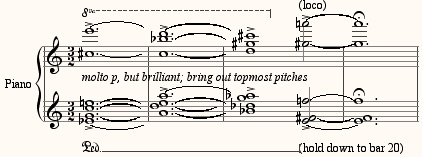I am told that Stephen “Lucky” Mosko (see here and here) has passed away at the age of only 58. He was a wonderful and well-regarded conductor, a faculty member at CalArts, and a composer too, though I’ve never heard any of his music. I know him only by reputation and through some wonderful recordings of Morton Feldman’s music that he conducted. I’m sure more detail on his career will be filled in in coming months. I do know that his father gave him the nickname Lucky, which he carried all his life, by telling him how lucky he was to have him for a father.

